ZZ plants are bulletproof plants because they can grow in any condition without proper care, but you need to keep them watered. So how often do you need to water your ZZ plant?
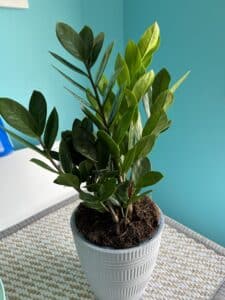
As the watering interval is too long, you do not need to devote yourself to the plant and care for it all the time fully.
Continue reading this article to know more about how often you need to water your ZZ plant.
Table of Contents Show
How to Know When ZZ Plant Needs Water?
Various factors can help you determine that your ZZ plants require water.
The most common ways to know when your ZZ needs water are;
1. Dry Leaf Tips
You may observe that your ZZ Plant appears to be in good condition overall but that some of the leaves are beginning to wilt, brown, and dry.
ZZ leaves are waxy and turgid as semi-succulent plants (swollen from water pressure).
If the plant is drying out, the leaves may get softer, and the tips may begin to dry out as a means of conserving water.
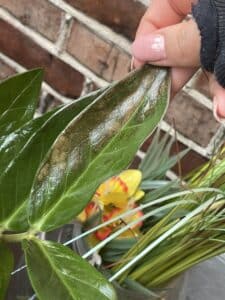
2. Dropping Leaves
Besides the drying of the tips of the leaves, lack of water will also cause the leaves to droop.
As the plants suffer from a lack of water for a few weeks, the plant leaves start to droop and limp from the stem.
The leaves will start to drop one by one, and if you don’t provide them with water, they will keep losing their moisture and end up dying in a short period.
3. Dry Soil
The next way to identify your ZZ plant needs water is by looking at its soil condition.
After a long period of drought, the soil will probably get dry and start to lose the nutrients that help the plant grow.
ZZ plants often prefer their soil to dry out during the watering period.
You can use a simple trick to check if your ZZ plant needs water or not.
You need to insert your finger in the soil around 1.5 to 2 inches deep.
If you feel the moisture from the soil, that indicates your plant has plenty of water to work with. If not, you need to provide it with water.
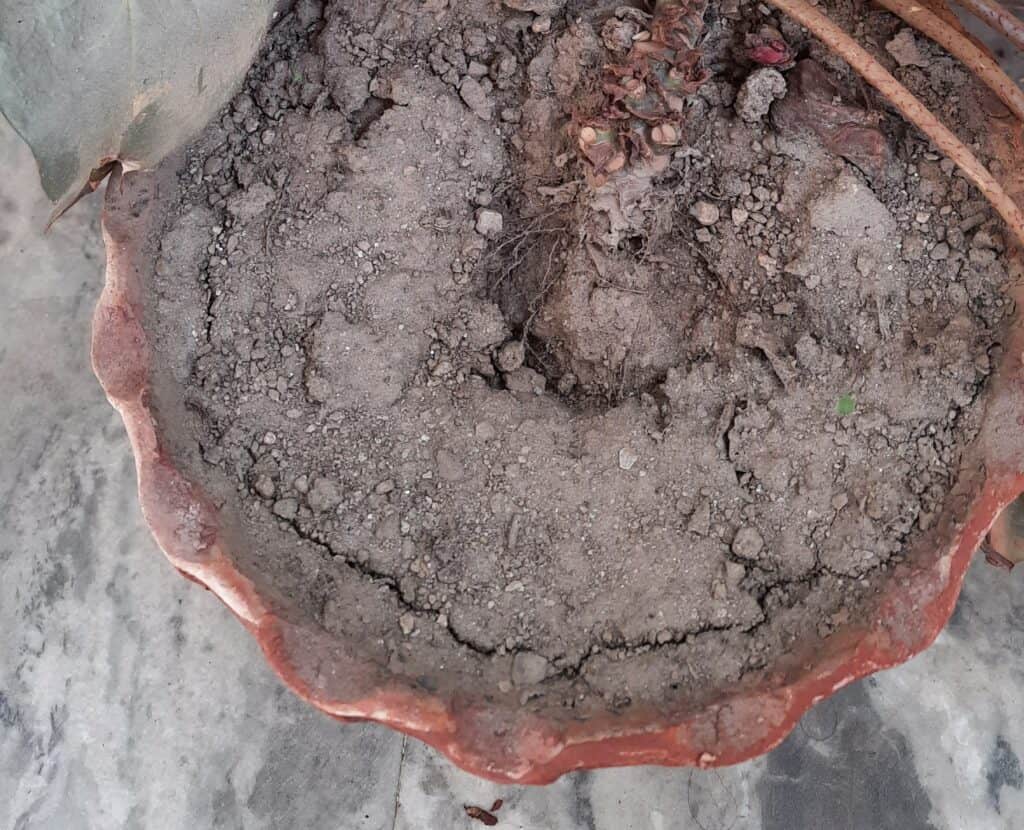
4. Wrinkled Leafstalk
Lastly, one of the easiest ways to identify if your ZZ plants need water or not is by looking at the leafstalk of the plant.
They tend to wrinkle to cope with the lack of water.
If you see that the petiole of your ZZ plant is wrinkling, then that is an indication for you to water the plant.
Signs that you may be Overwatering Your ZZ Plant
Well, just exactly how lack of water can be harmful to the plant, overwatering your plant can be a huge problem too.
If you are not sure when or how often you need to water your ZZ plant, you might overwater it if you do it in short intervals.
Here are some signs that your might be overwatering your ZZ plant.
1. Leaves Turning Yellow
If you are overwatering your ZZ plant, the first thing you will notice is that the leaves are slowly turning yellow.
When you overwater the ZZ plant, its roots become saturated.
It becomes quite hard for it to absorb all the nutrients from the soil due to excess water, resulting in yellow leaves.
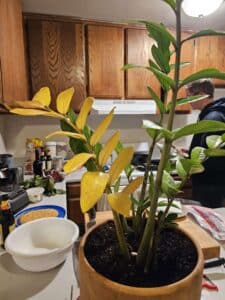
2. Brown and Mushy Stems
The next thing you might notice is that your ZZ plant’s steam slowly turns brown and mushy.
The excess water in the plant leaves and stems tends to cause the leaves to turn brown as it becomes unable to absorb nutrients from the soil.
The stems also become mushy in texture and easily broken with little to no effort.
3. Drooping of Leaves
You might be wondering how the plant tends to have droopy leaves in both cases of underwatering and overwatering.
Well, it is pretty simple; in both cases, the plant cannot absorb the nutrients from the soil, which makes its leaves droop.
The only difference between the two cases of drooping is that, when watered less, the plant’s leaves will droop one by one at a time.
But when it’s overwatered, it starts drooping in mass, and for a short period, all of its leaves turn droopy.
Save Overwatered ZZ Plant
Some immediate steps to help your overwatered ZZ plants are:
- First, remove the plant from its container and place it on a tray to dry. Then, leave the plant for a few days and wait for the water to dry out.
- Prune out dead leaves and stems. Trim leaves at the base, near the stem, and stems at the base, close to the soil, with a sharp and clean knife or scissors.
- Also, consider changing the potting soil and replacing it with well-draining potting soil.
- Along with the soil. Get a well-draining container too.
- Check to determine if the potting soil is saturated. If this is the case, your plant is most likely suffering from root rot and is very unhealthy. If you want to save your plant, you’ll need to repot it as soon as possible.
- Take away any remaining healthy stems and leaves and propagate to start a new and healthy ZZ Plant if the plant is severely damaged.
Methods to Check when your ZZ Needs Water
There are a few ways you can check if your ZZ plants need water.
- Stick your finger into the soil approximately two inches deep to check the moisture level in your ZZ plant soil. If the plant is dry and crumbly, give it plenty of water and make sure it drains correctly.
- Next, you can check by lifting the pot if it’s too heavy. If it is, that means your soil is moist and doesn’t need water, but if it’s light, you should water it.
- Poke a chopstick or skewer into the dirt at the bottom of the container. Remove it and inspect the stick for wetness. The plant does not require watering if the end of the stick is moist and has dirt stuck to it.
- You can also use a moisture meter to check if your ZZ plant needs water. After a few minutes in the soil, you’ll obtain a moisture reading, generally on a range of 1 to 10. Again, this is an extremely useful tool for ensuring that you only water your ZZ plant when it needs it.
- You should also water it if the soil of your plants seems dusty and loose as it lacks moisture.
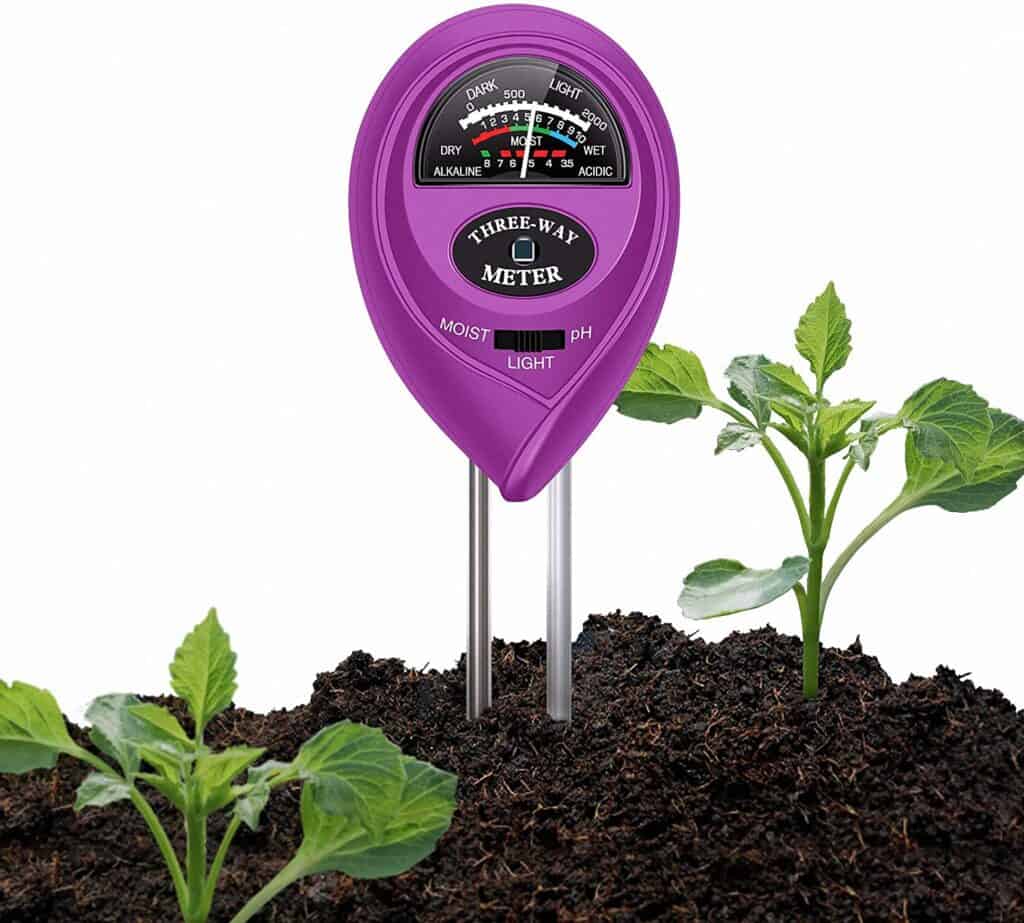
Factors that Affects Watering the ZZ Plant
You need to water the ZZ plant in different conditions at different periods.
Some of the factors that affect the watering of the ZZ plant are:
1. Location (Indoor Vs. Outdoor)
Placing the ZZ plant indoors or outdoors can cause the watering schedule to change according to where it is placed.
If you have kept your ZZ plant inside your house under indirect light, you do not need to worry about watering your plant often.
Under indirect sunlight, it will take longer for the soil to dry up.
On the other hand, if the ZZ plant is grown outdoors then; you might consider watering it more often than the indoor ones.
It will fall under direct sunlight for a long period, which might cause the soil to dry up faster.
Thus, you would need to water more often than indoor ZZ plants.
Consider the location of your plant and its requirement before starting the watering schedule.
2. Type of Potting Mix
The type of potting medium you choose to grow your ZZ plant will determine how frequently you must water it and how fast the potting medium dries out.
ZZ plants don’t prefer to stay moist all the time, so it’s better to get a well-draining potting mix.
You can use a chunky mix of organic potting soil, orchid bark, perlite, and horticultural charcoal to make a well-draining potting mix.
With those, you will be fine with watering your ZZ plant once every 2-3 weeks or even a month.
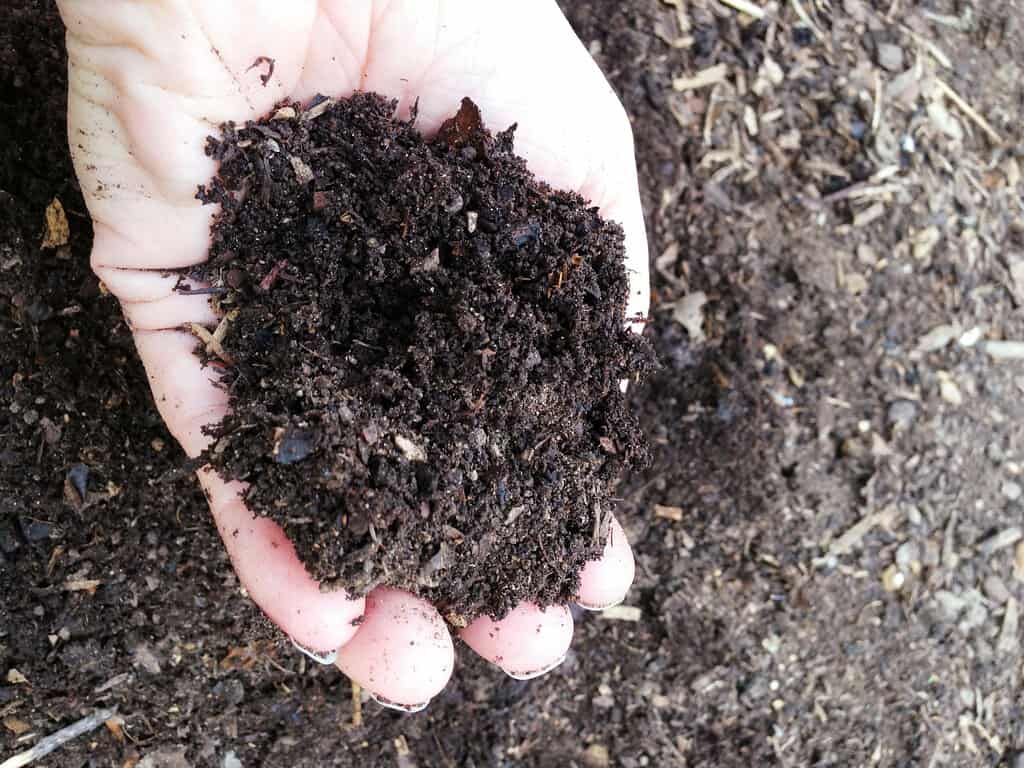
Compact soils require more water than normal ones and may require you to water them more often than usual.
3. The Type of Pot
Another factor that might affect the watering of your ZZ plant is its pot type.
ZZ plants prefer pots that allow airflow in the soil. You can grow a ZZ plant in 2-4 inches-deep pots.
Plastic or glazed ceramic pots will keep water in the potting medium until the plant utilizes it, drains out the bottom drainage holes, or evaporates.
With that said, Terracotta pots and unglazed pots would be the best option because it allows the free flow of air and water through their containers.

Always make sure the pot you’re using has drainage holes.
It’s quite difficult to consistently provide the proper amount of water into a container with no drainage holes.
If you choose a larger pot than 2-4 inches, make sure it is well-draining as well, and you will need to water it thoroughly.
4. Seasons (Winter Vs. Summer)
The next factor that affects the watering of the ZZ plant is the temperature.
Summer and winter are two seasons in that the ZZ plants need to change their watering schedule.
During the sunny days of summer, it is obvious that its soil dries up way quicker due to the heat from the sun and the sunlight.
Due to this, you need to water your ZZ plant quite often during the prime summer days. For example, you might need to water it every two weeks in summer.
On the other hand, the sun rarely comes out in the winter season.
Therefore, it helps the ZZ plant preserve the water in its soil for a long time.
You do not need to water it often, and it can probably go around a month without watering.
5. Type of Water
The type of water you use to water the plant can also impact the schedule.
The presence of dissolved magnesium minerals and calcium dictates the hardness of the water.
Soft water usually contains high levels of sodium.
With that said, it is usually fine to water your ZZ plant with your household’s tap water, but you need to be careful if the water is hardened or softened.
As hard and soft water contains minerals, it helps to fertilize the plant and provide them with better nutrients.
This helps the plant retain water and stay healthy for a long time, even if you don’t water it for a long time.
But frequently watering them with hard or soft water can cause problems in your plant and the soil by increasing their pH levels.
6. Temperature and Humidity
As tropical plants, ZZ plants do not like much humidity in the air around them.
Suppose you live in humid conditions and have grown a ZZ plant.
In that case, you need to consider watering it at longer intervals because the humidity in the air preserves the water in the soil for a longer period.
ZZ plants prefer to have around 40% humidity in the air.

Moving on to temperature, the ideal temperature for growing a ZZ plant is around 16 to 32°C.
Temperature impacts the plant’s watering schedule as your ZZ plant is in a higher temperature place; it will require you to water often.
However, it will require you to water less often in colder temperatures.
This is because, in colder temperatures, the soil can hold in the water and keep the moistness for longer compared to hot temperatures.
How Often to Water Your ZZ Plant?
Finally, to the main question on how often you need to water your ZZ plant.
The answer to this question can vary depending on climate, temperature, lighting, etc.
Generally, water your ZZ plant once every 2-3 weeks.
ZZ plants prefer their soil to dry out between the watering sessions, so you need to let the soil dry out before watering it again.
It would help if you kept the watering schedule to be healthy. Or you might end up underwatering or overwatering it.
You need to water it an average of around once per 2-3 weeks during the winter season, but as winter approaches and it gets colder, it’s better to extend the gap between watering.

You can water your ZZ plant around once in 4-5 weeks during the winter season.
Also, small and medium pots typically need 1 cup of water, while big pots require around 2 cups.
If in doubt, always prefer thoroughly watering the ZZ plant and letting the excess water drain entirely.
The Best Watering Techniques for ZZ Plant
ZZ is sensitive to overwatering; you can skip the frequent watering method.
As a general rule, you should water your ZZ plant again, When the top few inches of soil have dried up.
There are various techniques with which you can water your ZZ plant.
1. Water ZZ from the Top
The most typical way is to pour water directly onto the soil’s surface in your container.
Top watering is usually the recommended approach for ZZ Plants, in my experience, because it is fast; however, it may pose a minimal risk of hurting the plant.
The extra liquid will flush out any salt or mineral buildups in the soil and wash them out the bottom of the pot, making it a fantastic method to water.
However, if you suspect your plant is root bound or think the top watering approach is causing water to run down the sides of the pot instead of soaking the soil, use the bottom watering method to make sure it receives a good drink.
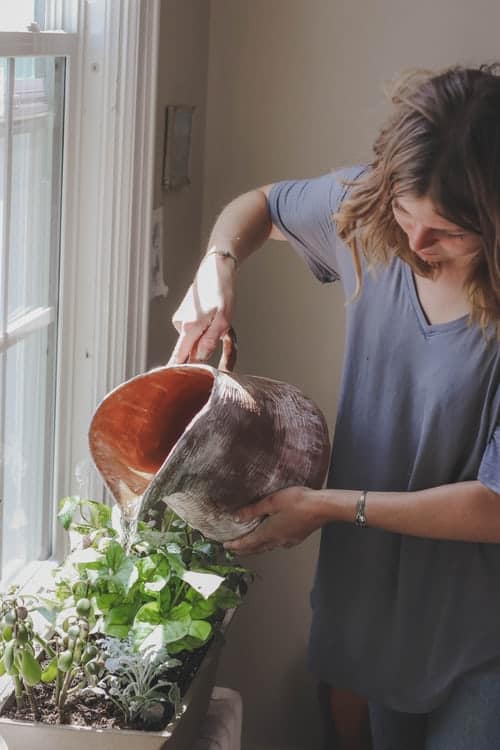
2. The Saucer Method
Alternatively, you may fill a tray halfway with water and place your pot in it to absorb moisture from the bottom. Allow it to soak for a few hours.
To prevent extra moisture from seeping into the soil, drain the saucer with the remaining water afterward.
It will aid in the preservation of soil nutrients and humidity.
3. The Soaking Method
ZZ plants are drought resistant because they are semi-succulents that can store water in their roots.
The soak-and-dry method is usually recommended, which involves allowing the potting soil to dry fully before watering the plant again.
It is preferable to under-water ZZ plants rather than over-watering them, as too much water might cause the rhizome to rot.
Fill a cup or tray halfway with water and pour it straight over the dirt surrounding the plant’s base. The root will gradually absorb liquid from the soil.
Should you Mist the ZZ Plant?
ZZ plants are found in practically every region. However, they prefer less humid temperatures. This also implies that they dislike being misted.
The leaves are glossy and puffy because they hold water, but that doesn’t imply they enjoy being wet.
If water remains on the leaves for an extended time, the leaves will turn brown and develop spots.
Keep the plant as dry as possible, and keep the humidity surrounding it below 50% for the best results.
Editor’s Note
ZZ plants are perfect for people just getting into plants and gardening, as they require less care than most plants.
You can leave them be for a long period without any care. But at one point, you need to water your ZZ plant for them to grow healthily.
By keeping these watering patterns and techniques in mind, you are ready to grow your ZZ plant in the best possible way.
